

others
Gold eases some gains on slower-than-expected decline in US Retail Sales – Crypto News
- Gold price rises for the straight third trading session due to easing US inflation.
- The US headline CPI rose at 3.2%, its slowest pace for two years.
- US Retail Sales contracted at a lower pace of 0.1% against a 0.3% estimate.
Gold price (XAU/USD) faces some pressure near a slower-than-projected decline in the United States Retail Sales data for October. Monthly Retail Sales declined by 0.1% against expectations of a 0.3% contraction. In September, the economic data rose by 0.7%. The broader demand for the precious metal remains upbeat as easing price pressures in the US economy have dented bets of further policy-tightening by the Federal Reserve (Fed). The precious metal capitalized on slow growth in the US headline inflation, which decelerated due to a sharp fall in gasoline prices. The soft US inflation report for October indicates that current interest rates set by the Fed are adequate to bring down inflation to 2%.
The US Dollar and bond yields are down as the soft Consumer Price Index (CPI) has underpinned a risk-on impulse. Easing consumer inflation has boosted confidence among investors in the possibility of early rate cuts by the Fed.
Daily Digest Market Movers: Gold price faces pressures on slower decline in US Retail Sales
- Gold price aims to extend recovery above $1,970.00 as a substantial decline in the US consumer inflation in October indicates that the Federal Reserve will likely not raise interest rates further.
- The US inflation data for October, released on Tuesday, indicated that headline inflation decelerated significantly. The annual headline CPI rose by 3.2%, softened from estimates of 3.3% and the former reading of 3.7%. This was the slowest growth in headline inflation in more than two years.
- A significant decline in the headline inflation rate was prompted by a sharp fall in global Oil prices.
- Rental prices continued to rise in October but at a slower pace than in September. Food and grocery prices expanded at a higher pace of 0.3%.
- Monthly core inflation, which takes out volatile Oil and food prices grew by 0.2% against estimates – and September’s growth rate – of 0.3%. Annual core inflation rose by 4.0%, decelerated from expectations and the prior release of 4.1%.
- Though core inflation declined more than expectations, the pace of decline was nominal, which indicates lingering stickiness. This remained a major concern for Federal Reserve policymakers last week, which forced them to lean toward raising interest rates further.
- Last week, Federal Reserve Chairman Jerome Powell commented that the central bank won’t hesitate in tightening monetary policy further as a failure to control inflation would be their biggest mistake.
- After the release of the US inflation data, Richmond Federal Reserve Bank President Thomas Barkin, speaking at an event in South Carolina, said the core inflation was partly offset by supply shortages.
- Thomas Barkin added that the central bank is making real progress on inflation but is not convinced inflation is on a smooth glide path back to its 2% target (for Core CPI). Barkin warned that the Fed needs to do more to curb demand and inflation.
- Latest inflation figures have turned the tide in favor of keeping interest rates unchanged by the Fed in the range of 5.25-5.50%. Economists hope that the Fed is done with hiking interest rates and that discussions about cutting interest rates will be early.
- The US Dollar Index (DXY) catches action near a two-month low around 104.00 after the release of the US Retail Sales.
- Monthly retail demand contracted at a slower pace of 0.1% while economists forecasted a decline of 0.3%. In September, Retail Sales gained by 0.7%.
- The decline in Retail Sales is majorly contributed by lower demand for automobiles as higher interest rates hit the cost of living of households. Retail Sales ex-autos were gained by 0.1% while investors anticipated a stagnant performance.
- In addition to the US economic data, US President Joe Biden’s meeting with China’s President Xi Jinping at the White House will be keenly watched. Discussions about the Israel-Palestine war are widely anticipated.
- Gains in Gold could be limited due to risk-on mood and easing Middle East tensions.
Technical Analysis: Gold price hovers near $1,970
Gold price jumps close to $1,970.00 after the release of the soft US inflation report. The precious metal resumed its upside journey after discovering significant buying interest near the 50-day Exponential Moving Average (EMA). The recovery in Gold has been extended above the 20-day, which indicates that the broader appeal has turned extremely bullish.
Gold FAQs
Gold has played a key role in human’s history as it has been widely used as a store of value and medium of exchange. Currently, apart from its shine and usage for jewelry, the precious metal is widely seen as a safe-haven asset, meaning that it is considered a good investment during turbulent times. Gold is also widely seen as a hedge against inflation and against depreciating currencies as it doesn’t rely on any specific issuer or government.
Central banks are the biggest Gold holders. In their aim to support their currencies in turbulent times, central banks tend to diversify their reserves and buy Gold to improve the perceived strength of the economy and the currency. High Gold reserves can be a source of trust for a country’s solvency. Central banks added 1,136 tonnes of Gold worth around $70 billion to their reserves in 2022, according to data from the World Gold Council. This is the highest yearly purchase since records began. Central banks from emerging economies such as China, India and Turkey are quickly increasing their Gold reserves.
Gold has an inverse correlation with the US Dollar and US Treasuries, which are both major reserve and safe-haven assets. When the Dollar depreciates, Gold tends to rise, enabling investors and central banks to diversify their assets in turbulent times. Gold is also inversely correlated with risk assets. A rally in the stock market tends to weaken Gold price, while sell-offs in riskier markets tend to favor the precious metal.
The price can move due to a wide range of factors. Geopolitical instability or fears of a deep recession can quickly make Gold price escalate due to its safe-haven status. As a yield-less asset, Gold tends to rise with lower interest rates, while higher cost of money usually weighs down on the yellow metal. Still, most moves depend on how the US Dollar (USD) behaves as the asset is priced in dollars (XAU/USD). A strong Dollar tends to keep the price of Gold controlled, whereas a weaker Dollar is likely to push Gold prices up.
-

 Blockchain1 week ago
Blockchain1 week agoAfrica Countries Pass Crypto Laws to Attract Industry – Crypto News
-
Cryptocurrency1 week ago
XRP News: Ripple Unveils ‘Ripple Prime’ After Closing $1.25B Hidden Road Deal – Crypto News
-
others1 week ago
JPY soft and underperforming G10 in quiet trade – Scotiabank – Crypto News
-
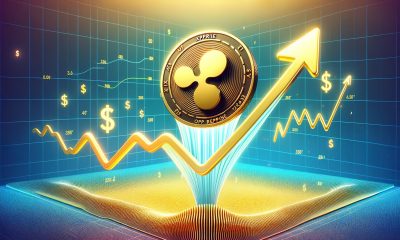
 Blockchain1 week ago
Blockchain1 week agoXRP Price Gains Traction — Buyers Pile In Ahead Of Key Technical Breakout – Crypto News
-

 Blockchain1 week ago
Blockchain1 week agoISM Data Hints Bitcoin Cycle Could Last Longer Than Usual – Crypto News
-
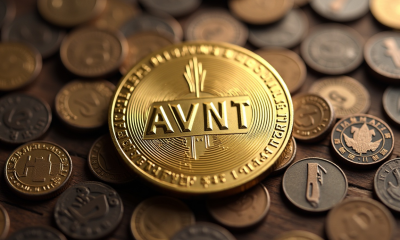
 Cryptocurrency1 week ago
Cryptocurrency1 week agoWhat next for Avantis price after the 73% recovery? – Crypto News
-

 Technology1 week ago
Technology1 week agoNothing OS 4.0 Beta introduces pre-installed apps to Phone (3a) series: Co-founder Akis Evangelidis explains the update – Crypto News
-

 Technology5 days ago
Technology5 days agoSam Altman says OpenAI is developing a ‘legitimate AI researcher’ by 2028 that can discover new science on its own – Crypto News
-

 Cryptocurrency1 week ago
Cryptocurrency1 week agoTrump plans to pick Michael Selig to lead CFTC: Report – Crypto News
-

 Blockchain1 week ago
Blockchain1 week agoEthereum Rebounds From Bull Market Support: Can It Conquer The ‘Golden Pocket’ Next? – Crypto News
-

 De-fi1 week ago
De-fi1 week agoNearly Half of US Retail Crypto Holders Haven’t Earned Yield: MoreMarkets – Crypto News
-

 Cryptocurrency1 week ago
Cryptocurrency1 week agoBitcoin’s institutional surge widens trillion-dollar gap with altcoins – Crypto News
-

 Technology1 week ago
Technology1 week agoUniswap Foundation (UNI) awards Brevis $9M grant to accelerate V4 adoption – Crypto News
-

 Blockchain1 week ago
Blockchain1 week agoBinance Stablecoin Outflow On A Steady Rise — What This Means For The Market – Crypto News
-
others1 week ago
Indian Court Declares XRP as Property in WazirX Hack Case – Crypto News
-

 Cryptocurrency1 week ago
Cryptocurrency1 week agoWestern Union eyes stablecoin rails in pursuit of a ‘super app’ vision – Crypto News
-

 Technology1 week ago
Technology1 week agoFrom Studio smoke to golden hour: How to create stunning AI portraits with Google Gemini – 16 viral prompts – Crypto News
-
Business1 week ago
PEPE Coin Price Prediction as Weekly Outflows Hit $17M – Is Rebound Ahead? – Crypto News
-

 Cryptocurrency1 week ago
Cryptocurrency1 week agoHYPE Breaks Out After Robinhood Listing and S-1 Filing: What’s Next? – Crypto News
-

 De-fi1 week ago
De-fi1 week agoHYPE Jumps 10% as Robinhood Announces Spot Listing – Crypto News
-
others1 week ago
Platinum price recovers from setback – Commerzbank – Crypto News
-
Business1 week ago
White House Crypto Czar Backs Michael Selig as ‘Excellent Choice’ To Lead CFTC – Crypto News
-
others1 week ago
Bitcoin Price Eyes $120K Ahead of FED’s 98.3% Likelihood to Cut Rates – Crypto News
-

 Technology1 week ago
Technology1 week agoMint Explainer | India’s draft AI rules and how they could affect creators, social media platforms – Crypto News
-
others1 week ago
GBP/USD holds steady after UK data, US inflation fuels rate cut bets – Crypto News
-

 Blockchain1 week ago
Blockchain1 week agoEntire Startup Lifecycle to Move Onchain – Crypto News
-

 Blockchain1 week ago
Blockchain1 week agoXRP/BTC Retests 6-Year Breakout Trendline, Analyst Calls For Decoupling – Crypto News
-

 Cryptocurrency1 week ago
Cryptocurrency1 week agoUSDJPY Forecast: The Dollar’s Winning Streak Why New Highs Could Be At Hand – Crypto News
-
others1 week ago
Is Changpeng “CZ” Zhao Returning To Binance? Probably Not – Crypto News
-

 Cryptocurrency1 week ago
Cryptocurrency1 week agoFetch.ai and Ocean Protocol move toward resolving $120M FET dispute – Crypto News
-
Technology1 week ago
Can Hype Price Hit $50 After Robinhood Listing? – Crypto News
-

 Technology1 week ago
Technology1 week agoOpenAI announces major Sora update: Editing, trending cameos, and Android launch on the way – Crypto News
-

 Metaverse1 week ago
Metaverse1 week agoGemini in Gmail automates meeting schedules effortlessly – Crypto News
-

 Cryptocurrency1 week ago
Cryptocurrency1 week agoNEAR’s inflation reduction vote fails pass threshold, but it may still be implemented – Crypto News
-

 Technology1 week ago
Technology1 week agoSurvival instinct? New study says some leading AI models won’t let themselves be shut down – Crypto News
-
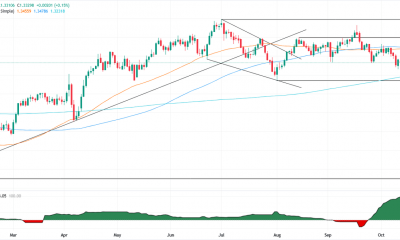
 others7 days ago
others7 days agoGBP/USD floats around 1.3320 as softer US CPI reinforces Fed cut bets – Crypto News
-
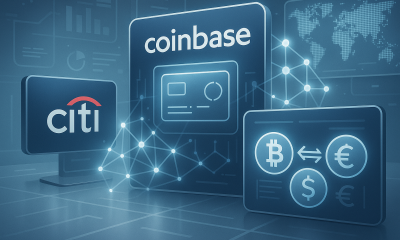
 Cryptocurrency6 days ago
Cryptocurrency6 days agoCitigroup and Coinbase partner to expand digital-asset payment capabilities – Crypto News
-

 Cryptocurrency5 days ago
Cryptocurrency5 days agoInside Bitwise’s milestone solana ETF launch – Crypto News
-
others1 week ago
Silver consolidates below $49 amid Fed rate-cut bets – Crypto News
-
Business1 week ago
HBAR Price Targets 50% Jump as Hedera Unleashes Massive Staking Move – Crypto News
-
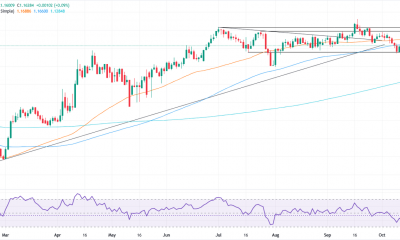
 others1 week ago
others1 week agoEUR/USD hovers at 1.1600 as muted CPI data fails to alter Fed stance – Crypto News
-
Business1 week ago
Trump Picks SEC Crypto Counsel Michael Selig to Lead CFTC Amid Crypto Oversight Push – Crypto News
-

 Blockchain1 week ago
Blockchain1 week agoPump.Fun Rallies 10% After Acquisition Of Trading Terminal Padre – Crypto News
-
Technology1 week ago
Analyst Eyes Key Support Retest Before a Rebound for Ethereum Price Amid $93M ETF Outflows and BlackRock Dump – Crypto News
-
Business1 week ago
Ripple Explores New XRP Use Cases as Brad Garlinghouse Reaffirms Token’s ‘Central’ Role – Crypto News
-
others1 week ago
Tether’s Stablecoin 1.0 Era Is Over – Now the Industry Needs 2.0 – Crypto News
-

 De-fi1 week ago
De-fi1 week agoAave Labs Acquires Stable Finance to Expand DeFi Access – Crypto News
-

 Blockchain1 week ago
Blockchain1 week agoKyrgyzstan Launches Stablecoin While Confirming Future CBDC – Crypto News
-
others1 week ago
USD/JPY extends gains as strong US PMI offsets softer CPI data – Crypto News
-
Technology1 week ago
James Wynn Takes XRP Long Bet After Ripple Prime Announcement – Crypto News










